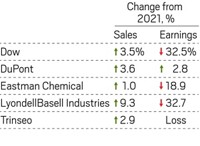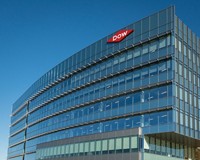Advertisement
Grab your lab coat. Let's get started
Welcome!
Welcome!
Create an account below to get 6 C&EN articles per month, receive newsletters and more - all free.
It seems this is your first time logging in online. Please enter the following information to continue.
As an ACS member you automatically get access to this site. All we need is few more details to create your reading experience.
Not you? Sign in with a different account.
Not you? Sign in with a different account.
ERROR 1
ERROR 1
ERROR 2
ERROR 2
ERROR 2
ERROR 2
ERROR 2
Password and Confirm password must match.
If you have an ACS member number, please enter it here so we can link this account to your membership. (optional)
ERROR 2
ACS values your privacy. By submitting your information, you are gaining access to C&EN and subscribing to our weekly newsletter. We use the information you provide to make your reading experience better, and we will never sell your data to third party members.
Business
Paints And Coatings: Recovery Will Come Slowly In Developed Economies
by Marc S. Reisch
January 10, 2011
| A version of this story appeared in
Volume 89, Issue 2
COVER STORY
Paints And Coatings: Recovery Will Come Slowly In Developed Economies
Paint sales will show little improvement in 2011 in the developed economies of Europe and the U.S., where the pace of economic recovery is slow, but they will continue to barrel ahead in the fast-growing countries of Asia and South America, says Phil Phillips, managing director of Chemark Consulting.
In the U.S., moribund residential and commercial construction activity means that the do-it-yourself component of the architectural paint market will fare better than the contractor component. But overall paint sales will lag behind the low-single-digit increases in GDP, Phillips says. One bright spot is that an increase in U.S. auto production from about 10 million in 2010 to nearly 13 million in 2011 should lift new-vehicle coatings sales.
European coatings sales will be hampered by the economic problems in Portugal, Ireland, Greece, and Spain. But developing Asian countries, and particularly China, “will just keep on booming,” Phillips says, as factory output grows and middle-class buying power increases both industrial and construction-driven coatings sales.
Guillermo Novo, vice president of Dow Chemical’s coating materials business, expects Chinese demand for paint materials this year to rise 8–10%. Other developing economies of Asia and South America should experience growth rates in the 4–7% range. As consumers in the developing world move up the economic ladder, they are also buying value-added paints with benefits such as mold and mildew resistance, Novo adds.
Strong demand from developing economies has also created tight supplies of the widely used paint pigment titanium dioxide, both Novo and Phillips note. Dow plans to introduce new raw materials that will help paint makers extend their supplies of the increasingly costly opacifying pigment.
Shortages of acrylic monomers, used to make a variety of architectural and industrial paints, plagued paint makers in the spring of 2010 as the global economic recovery got under way. The supply situation is back to normal “from our side,” Novo says about Dow. But Phillips warns that acrylic acid capacity taken down in anticipation of a long slowdown still hasn’t completely come back on-line and will lead to monomer shortages through June of this year.
Eric Kaiser, marketing director for Arkema’s emulsion systems business, says he expects acrylic monomers and resins to remain in tight supply in 2011. Arkema is working with customers to anticipate their needs, especially when demand hits its seasonal peak in the second quarter.





Join the conversation
Contact the reporter
Submit a Letter to the Editor for publication
Engage with us on Twitter